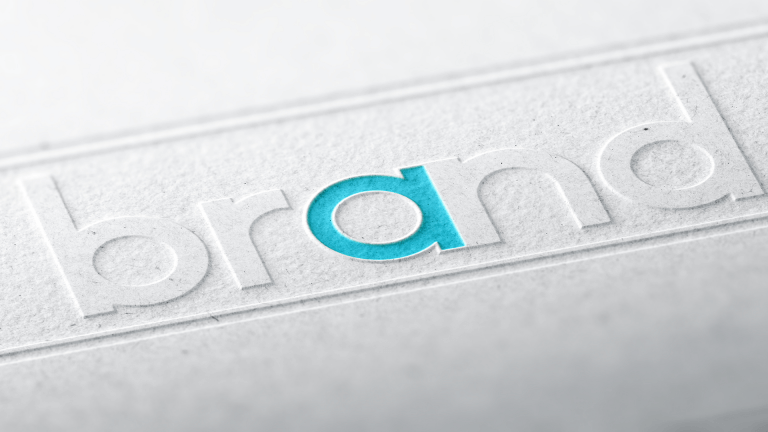In light of the recent surge in gold prices, many investors are turning their attention to the tangible allure of physical gold as a cornerstone of their investment portfolios. This article delves into the multifaceted world of gold investment, offering insights into understanding the fundamentals, selecting the appropriate form for your investment needs, and navigating the intricacies of acquiring gold coins, bars, and even jewellery. Additionally, we explore the strategic role of gold certificates and provide essential tips on safe storage and effective selling strategies to maximize your investment returns. With a focus on reliability and expert guidance, this piece aims to equip you with the knowledge to make informed decisions in the dynamic realm of physical gold investment.
Understanding the Basics of Physical Gold Investment
According to the experts at StoneX Bullion, investing in physical gold has long been a favoured strategy for diversifying their investment portfolios and hedging against economic uncertainty. The allure of gold lies in its intrinsic value, historical performance, and its role as a haven during times of financial instability. Investors can choose from various forms, including gold coins, bars, and bullion. Each form has its considerations regarding premiums, storage, and liquidity. Investors must weigh these factors carefully to align their gold investments with their financial goals and risk tolerance.
When comparing the different ways to invest in physical gold, it’s essential to consider the costs and benefits associated with each option. For example, gold coins are often more accessible to the average investor and can carry historical or collectible value beyond the gold content. However, they may come with higher premiums over the spot price of gold. In contrast, gold bars typically offer a more cost-effective way to invest in gold due to lower premiums, but they may be less liquid and more complex to sell in smaller quantities.
Understanding the nuances of each investment option is vital to making informed decisions. Storage and insurance are critical considerations for physical gold investors, as these factors directly impact the overall cost and security of the investment. While some investors prefer the tangible security of holding their gold physically, others may opt for professional storage solutions to mitigate the risks of theft or loss. Regardless of the chosen method, the goal remains to leverage gold’s enduring value as part of a balanced investment strategy.
Choosing the Right Type of Physical Gold for Your Portfolio
When considering the addition of physical gold to your investment portfolio, understanding the various forms available is crucial. Bullion coins and bars are among the most popular choices for investors due to their high purity levels and the ease with which they can be bought, sold, and stored. These options are ideal for those investing in gold to hedge against inflation or economic uncertainty. The value of bullion is primarily based on its weight and the current market price of gold, making it a straightforward investment choice for beginners and seasoned investors alike.
Numismatic coins offer an alternative avenue for those interested in a blend of investment and collectability. These coins are valued for their gold content, rarity, historical significance, and aesthetic appeal. While numismatic coins can provide higher long-term returns, they require a deeper understanding of the coin-collecting market and are subject to more volatility than bullion. Investors considering numismatic coins should be prepared to conduct thorough research or consult with experts to ensure the authenticity and actual value of their purchases.
Another aspect to consider is the size and weight of the gold you intend to purchase. Larger bars offer a lower premium over the spot price of gold than smaller bars and coins, making them a more cost-effective option for substantial investments. However, smaller pieces afford greater flexibility regarding liquidation, as they can be sold in increments to meet financial needs or take advantage of favorable market conditions. In conclusion, choosing the right type of physical gold for your portfolio depends on your investment goals, risk tolerance, and interest in the gold market. A well-considered choice will help ensure that your investment adds diversity to your portfolio and meets your financial objectives.
Navigating the Purchase of Gold Coins and Bars
Exploring the realm of physical gold investment requires a keen understanding of the market and its various forms. Gold coins and bars are popular choices for investors seeking tangible assets. These forms of gold not only offer the metal’s intrinsic value but also carry historical and collectible significance, especially in the case of coins. Investors must research and verify their gold investments’ purity, authenticity, and storage options to ensure security and liquidity.
Diving deeper into the specifics, government entities often mint gold coins with face value. However, their market value is usually much higher due to the content of gold and collector demand. On the other hand, gold bars are prized for their higher gold content and lower premiums over the spot price of gold, making them a more cost-effective option for bulk investors. Both options require a discerning eye for details such as weight, purity (usually expressed in karats or fineness), and the reputation of the mint or manufacturer.
Securing your investment is paramount, with options ranging from home safes to bank safe deposit boxes or even specialized precious metals storage facilities. The choice of storage will impact the liquidity and safety of your investment, with each option presenting its own set of risks and benefits. Investors should also consider the implications of their investment choices on insurance and potential future sales, as the ease of liquidating gold coins and bars can vary significantly based on market demand and the item’s specifics. Engaging with reputable dealers and conducting due diligence can mitigate many risks of investing in physical gold.
Exploring Gold Jewellery as an Investment Option
Investing in gold jewelry is not just about adding beautiful pieces to your collection; it’s a strategic move that can yield significant returns over time. One of the critical advantages of gold jewelry as an investment is its dual-purpose nature. Not only does it serve as a decorative item, but it also holds intrinsic value due to its gold content. This means that while you enjoy wearing your investment, it continues to hold and potentially increase in value, especially in economic uncertainty when gold prices typically rise.
There are several factors to consider to maximize the potential of your gold jewelry investment. These include:
- Purity: Higher karat gold jewelry (22K or 24K) contains more gold and is more valuable, but it’s also softer and more prone to damage.
- Craftsmanship: Well-crafted pieces from reputable designers or historical pieces can fetch a premium over their melt value due to their artistic merit and rarity.
- Liquidity: Standard pieces like simple gold bands or investment-grade gold coins incorporated into jewelry are more accessible to sell than more unique or ornate items.
Moreover, purchasing gold jewelry from reputable sources is crucial to ensure authenticity and fair pricing. While the upfront cost might be higher than buying gold bars or coins, the enjoyment of wearing your investment and the potential for appreciation due to rarity and demand for specific pieces can make gold jewelry a rewarding investment. Remember, the resale value of gold jewelry is determined by the gold market and the desirability of the piece itself, making it a unique and potentially lucrative way to invest in gold.
The Role of Gold Certificates in Physical Gold Investment
Gold certificates represent an often overlooked avenue for investing in physical gold, offering a blend of physical ownership benefits without the necessity of handling or storing the metal. These certificates are a promise from the issuer, typically a bank or a gold storage facility, that the holder owns a specific amount of gold stored in their vaults. This method eliminates the risks and costs associated with the physical storage of gold, making it an attractive option for investors who wish to have exposure to gold prices without dealing with the logistical challenges of physical gold. Gold certificates can be an efficient and secure way to invest in gold, especially for those looking to avoid the premiums and storage issues of physical bars or coins.
Comparing gold certificates to other forms of physical gold investment reveals distinct advantages and considerations. For instance, gold coins and bars offer tangible ownership that can be appealing, but they come with higher premiums and require secure storage solutions. On the other hand, gold certificates have lower transaction costs and do not necessitate physical storage, making them more cost-effective for confident investors.
Storing Your Physical Gold: Safety and Security Tips
Securing your investment in physical gold requires careful consideration of storage options to ensure safety and accessibility. Many investors opt for home safes or safety deposit boxes at banks, weighing the pros and cons of each. While home safes offer immediate access to your assets, safety deposit boxes provide enhanced security features and protection from natural disasters. It’s crucial to assess the level of security, insurance implications, and accessibility associated with each storage method to make an informed decision that aligns with your investment strategy and risk tolerance.
The choice between home storage and bank storage often comes down to the size of the investment and personal comfort levels with third-party storage. For instance, investors with substantial holdings in gold might find the advanced security measures and insurance options banks offer more reassuring. On the other hand, those with smaller collections may prefer the convenience and lower cost of a high-quality home safe. It’s important to note that some insurance policies may not cover high-value items like gold in home safes, making verifying coverage details with your provider essential.
Regardless of the chosen storage method, incorporating additional security measures such as surveillance cameras, alarm systems, and motion detectors can provide further peace of mind. It’s also advisable to keep a detailed inventory of your gold holdings, including photographs and serial numbers, if applicable. This documentation can be invaluable in the event of theft or loss, facilitating the recovery process and insurance claims. Ultimately, the goal is to balance maximum security and practical accessibility, ensuring that your gold investment remains safe and retains its value over time.
Selling Your Physical Gold: Strategies for Maximizing Returns
Understanding the optimal timing and methods for selling physical gold can significantly impact your returns. Market trends indicate that gold prices rise during economic uncertainty or inflation.
Choosing the right platform or venue for selling your gold is equally crucial. Traditional methods, such as selling to pawn shops or jewellery stores, may offer convenience but often result in lower pay-outs due to the intermediary’s cut. In contrast, selling directly to buyers through online marketplaces or auctions has become more lucrative.























